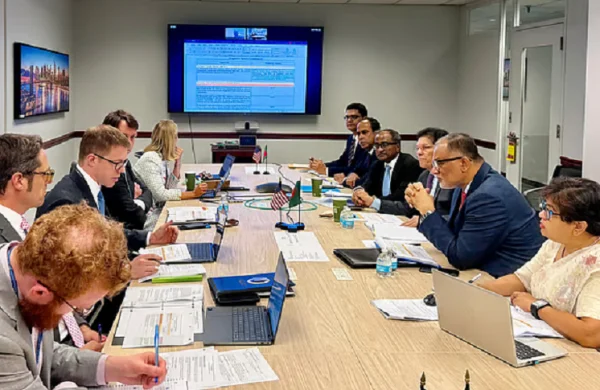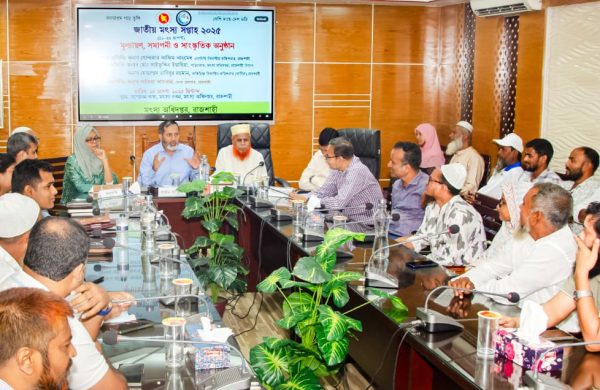50m people trapped in modern slavery, report finds
- Update Time : Monday, September 12, 2022

International Desk
Indian laborers walk as they pluck tea leaves at a plantation in Ghandigram on April 30, 2019.
From the pandemic to the climate crisis, disasters of the past five years have upended daily life, and a new report shows that in many countries the ensuing economic uncertainty has pushed millions into modern slavery.
An estimated 50 million people worldwide are believed to be victims of forced marriage and forced labor — up 25% from the last estimate in 2016 — according to a new report published Monday by the International Labour Organization (ILO), Walk Free and the International Organisation for Migration.
Modern slavery refers to forced labor and forced marriage, when someone cannot refuse to comply or escape owing to threats, violence and deception. The researchers conducted a series of surveys across more than 180 countries to come up with their results.
According to the report, Covid-19, armed conflicts, and the climate crisis caused “unprecedented disruption” to employment and education, leading to an increase in poverty, unsafe migration and gender-based violence — all risks for modern day slavery.
But ILO’s director general, Guy Ryder, said “nothing can justify the persistence of this fundamental abuse of human rights.”
“We know what needs to be done, and we know it can be done. Effective national policies and regulation are fundamental. But governments cannot do this alone,” he said.
The report says better laws, stronger legal protections and greater support for women, girls and vulnerable people could significantly reduce or one day end modern slavery.
Women and girls vulnerable:
An estimated 22 million people are living in a marriage they had been forced into, the report said — a 43% increase from 2016 figures.
More than two thirds of those forced to marry are women and girls, according to the report, putting them at greater risk of sexual exploitation and violence.
More people in Asia and the Pacific were in forced marriages, but when population size was taken to account, researchers found that forced marriage was more prevalent in Arab states.
Covid-19 has “exacerbated the underlying drivers of all forms of modern day slavery, including forced marriage,” the report said.
In some countries, lockdowns prevented daily wage workers from earning money, and with schools shut some families sent their children to work to help put food on the table.
India’s capital Delhi experienced one of the world’s longest school lockdowns because of the pandemic, forcing more than 4 million children out of the classroom for more than 600 days.
About 10% of children in the city’s government schools dropped out of education because of the pandemic and its economic impact on poorer families, according to Shaheen Mistri, founder of non-profit organization Teach For India.
“Child marriage has gone up, violence against children has gone up, nutrition is a huge issue as many of our children depend on school meals,” Mistri told CNN in January.
And the data published in Monday’s report likely does not show the whole picture.
“As the data only partially reflect the effects of the Covid-19 pandemic, the estimates presented in this report are likely to understate the full magnitude of the pandemic’s impact,” it said.
Children and forced labor:
Forced labor has increased by 11% to 28 million people since 2016, according to the report — and almost one in eight are children, giving the issue “special urgency,” the report said.
More than half of the children are in commercial sexual exploitation, which involves trafficking crimes where the primary form of forced labor is in sexual services, it added.
“Qualitative reports indicate that children can be subjected to severe forms of coercion and abuse, including abduction, drugging, being held in captivity, deception and manipulation of debt,” according to the report. “Some of the worst abuses occur in situations of armed conflict.”
About 86% of cases of forced labor are found in private sector industries, including manufacturing, construction and agriculture, with Asia and the Pacific home to more than half of the global total, according to the report.
Research showed differences between genders when it came to forced labor, including the industries that employ them and the nature of the coercion.
Women forced into labor are much more likely than men to perform domestic work, while men are likely to be in the construction sector, the report said.
While women are more likely to be coerced into forced labor through abuse and non-payment, men are more likely to receive violent threats and financial penalties, it added. (Source: CNN.)



















